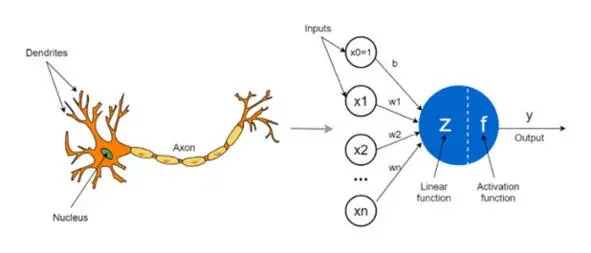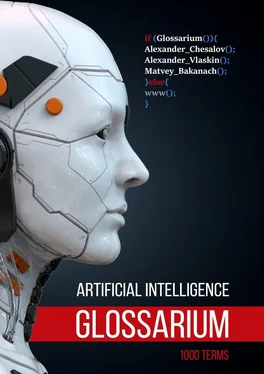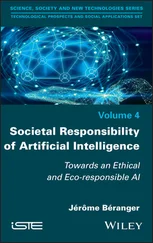1 ...6 7 8 10 11 12 ...26 Artificial Neural Network (ANN) (Искусственная нейронная сеть) – is a computational model in machine learning, which is inspired by the biological structures and functions of the mammalian brain. Such a model consists of multiple units called artificial neurons which build connections between each other to pass information. The advantage of such a model is that it progressively “learns” the tasks from the given data without specific programing for a single task.
Artificial neuron is a mathematical function conceived as a model of biological neurons, a neural network. The difference between an artificial neuron and a biological neuron is shown in the figure.
Artificial neurons are the elementary units of an artificial neural network. An artificial neuron receives one or more inputs (representing excitatory postsynaptic potentials and inhibitory postsynaptic potentials on nerve dendrites) and sums them to produce an output signal (or activation, representing the action potential of the neuron that is transmitted down its axon). Typically, each input is weighted separately, and the sum is passed through a non-linear function known as an activation function or transfer function. Transfer functions are usually sigmoid, but they can also take the form of other non-linear functions, piecewise linear functions, or step functions. They are also often monotonically increasing, continuous, differentiable, and bounded [ 56 56 Artificial neuron [Электронный ресурс] //en.wikipedia.org. URL: https://en.wikipedia.org/wiki/Artificial_neuron (дата обращения: 07.07.2022)
, 57 57 Artificial neuron [Электронный ресурс] //towardsdatascience.com URL: https://towardsdatascience.com/the-concept-of-artificial-neurons-perceptrons-in-neural-networks-fab22249cbfc (дата обращения: 07.07.2022)
].

Artificial Superintelligence (ASI) (Искусственный сверхинтеллект) –is a term referring to the time when the capability of computers will surpass humans. “Artificial intelligence,” which has been much used since the 1970s, refers to the ability of computers to mimic human thought. Artificial superintelligence goes a step beyond and posits a world in which a computer’s cognitive ability is superior to a human.
Assistive intelligence (Вспомогательный интеллект)is AI-based systems that help make decisions or perform actions.
Association (Ассоциация)is another type of unsupervised learning method that uses different rules to find relationships between variables in a given dataset. These methods are frequently used for market basket analysis and recommendation engines, along the lines of “Customers Who Bought This Item Also Bought” recommendations.
Association for the Advancement of Artificial Intelligence (AAAI) (Ассоциация по развитию искусственного интеллекта) —An international, nonprofit, scientific society devoted to promote research in, and responsible use of, artificial intelligence. AAAI also aims to increase public understanding of artificial intelligence (AI), improve the teaching and training of AI practitioners, and provide guidance for research planners and funders concerning the importance and potential of current AI developments and future directions
Association Rule Learning (Правила обучения ассоциации) –A rule-based Machine Learning method for discovering interesting relations between variables in large data sets.
Asymptotic computational complexity (Асимптотическая вычислительная сложность) –In computational complexity theory, asymptotic computational complexity is the usage of asymptotic analysis for the estimation of computational complexity of algorithms and computational problems, commonly associated with the usage of the big O notation [ 58 58 Asymptotic computational complexity [Электронный ресурс] // dic.academic.ru URL: https://dic.academic.ru/dic.nsf/eng_rus/429332/asymptotic (дата обращения: 27.01.2022)
].
Asynchronous inter-chip protocols (Асинхронные межкристальные протоколы)are protocols for data exchange in low-speed devices; instead of frames, individual characters are used to control the exchange of data.
Attention mechanism (Механизм внимания)is one of the key innovations in the field of neural machine translation. Attention allowed neural machine translation models to outperform classical machine translation systems based on phrase translation. The main bottleneck in sequence-to-sequence learning is that the entire content of the original sequence needs to be compressed into a vector of a fixed size. The attention mechanism facilitates this task by allowing the decoder to look back at the hidden states of the original sequence, which are then provided as a weighted average as additional input to the decoder.
Attributional calculus (AC) (Атрибутивное исчисление) –A logic and representation system defined by Ryszard S. Michalski. It combines elements of predicate logic, propositional calculus, and multi-valued logic. Attributional calculus provides a formal language for natural induction, an inductive learning process whose results are in forms natural to people [ 59 59 Attributional calculus Ryszard S. Michalski (2004), attributional calculus: a logic and representation language for natural induction. Machine Learning and Inference Laboratory, George Mason University, Fairfax, VA 22030—4444 and Institute of Computer Science, Polish Academy of Sciences, Warsaw.
].
Augmented Intelligence (Дополненный (расширенный) интеллект) – is the intersection of machine learning and advanced applications, where clinical knowledge and medical data converge on a single platform. The potential benefits of Augmented Intelligence are realized when it is used in the context of workflows and systems that healthcare practitioners operate and interact with. Unlike Artificial Intelligence, which tries to replicate human intelligence, Augmented Intelligence works with and amplifies human intelligence [ 60 60 Augmented Intelligence [Электронный ресурс] // gartner.com URL: https://www.gartner.com/en/information-technology/glossary/augmented-intelligence#:~:text=Augmented%20intelligence%20is%20a%20design,decision%20making%20and%20new%20experiences . (дата обращения: 28.01.2022)
]
Augmented reality (AR) (Дополненная реальность) —An interactive experience of a real-world environment where the objects that reside in the real-world are “augmented” by computer-generated perceptual information, sometimes across multiple sensory modalities, including visual, auditory, haptic, somatosensory, and olfactory.
Augmented reality technologies (Технологии дополненной реальности)are visualization technologies based on adding information or visual effects to the physical world by overlaying graphic and/or sound content to improve user experience and interactive features.
Auto Associative Memory (Автоассоциативная память)is a single layer neural network in which the input training vector and the output target vectors are the same. The weights are determined so that the network stores a set of patterns. As shown in the following figure, the architecture of Auto Associative memory network has “n’ number of input training vectors and similar “n’ number of output target vectors [ 61 61 Auto Associative Memory [Электронный ресурс] www.tutorialspoint.com URL: https://www.tutorialspoint.com/artificial_neural_network/artificial_neural_network_associate_memory.htm#:~:text=These%20kinds%20of%20neural%20networks,with%20the%20given%20input%20pattern . (дата обращения: 07.07.2022)
].
Читать дальше













